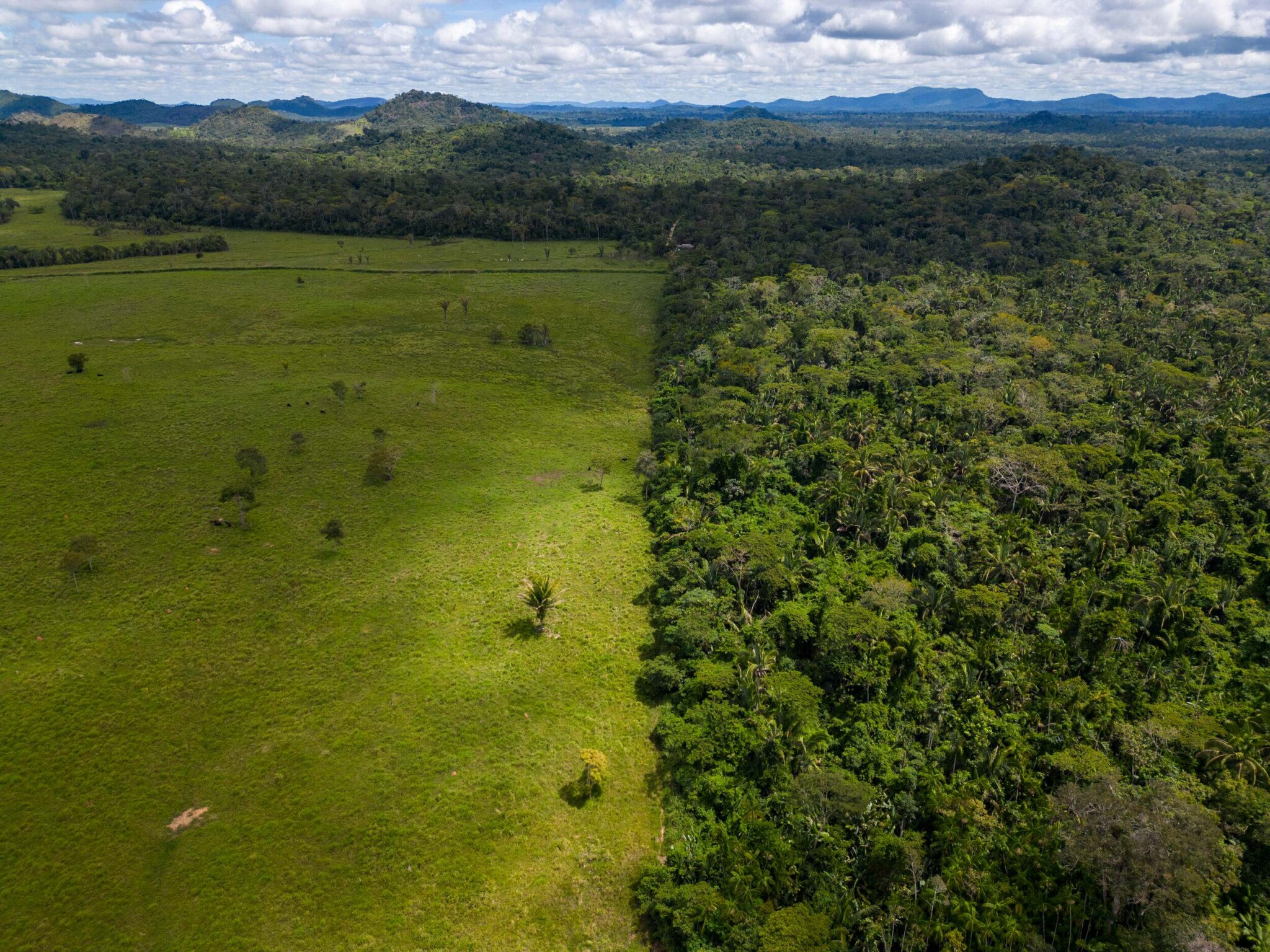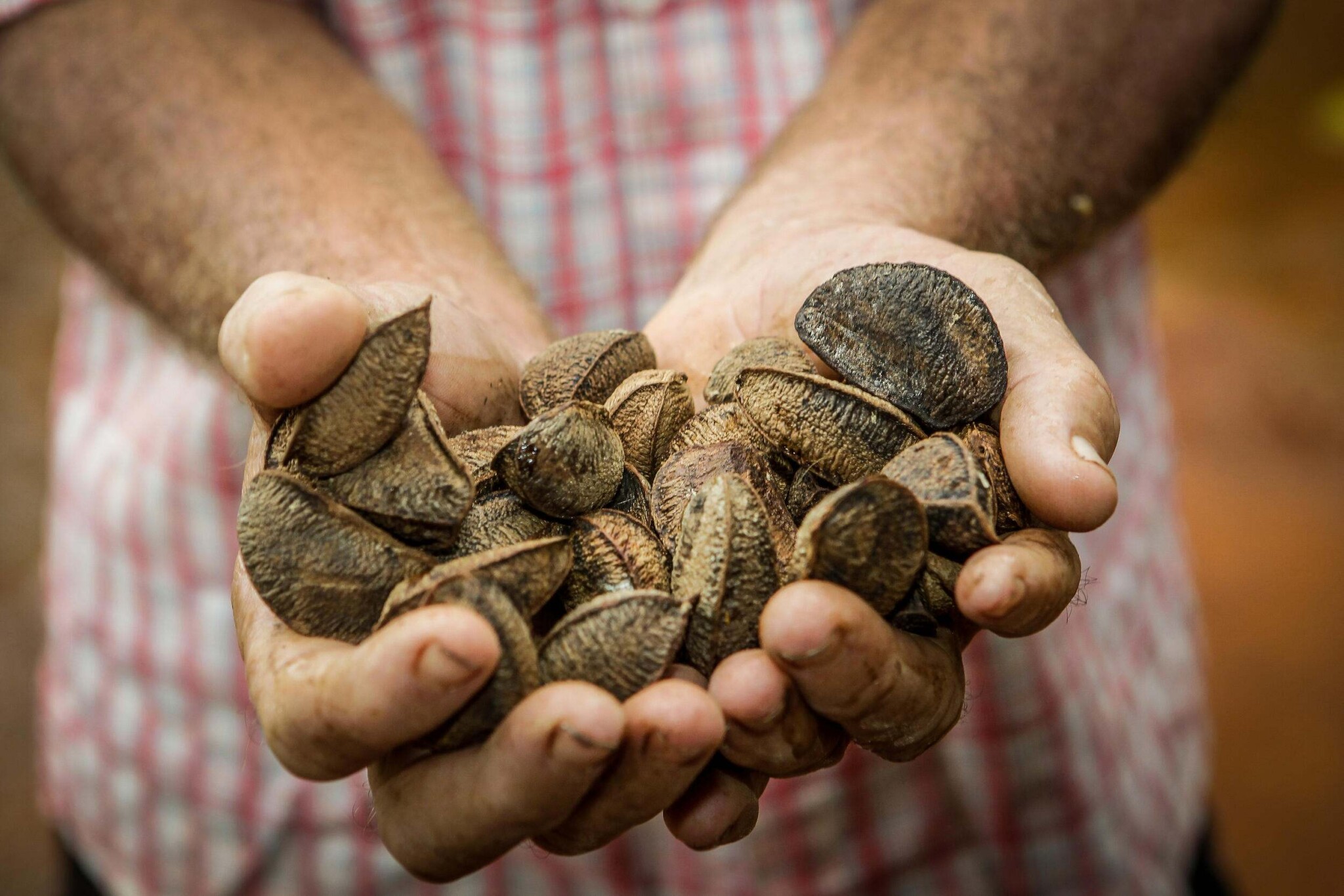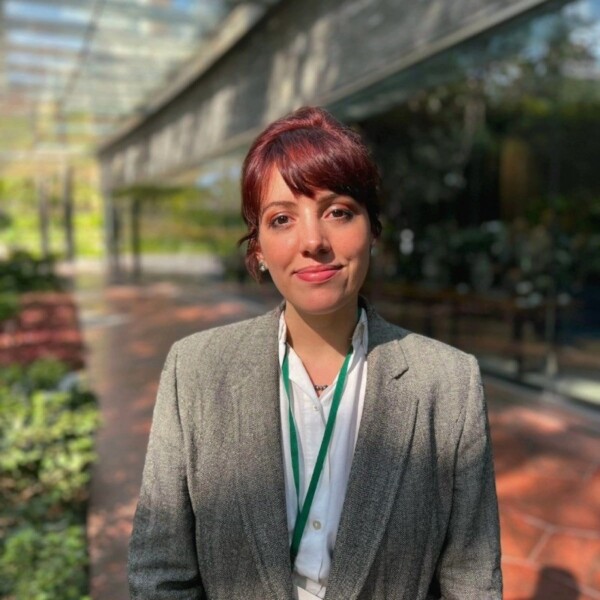
Group of men mounting horses dressed in typical outfits in São Felix do Xingu, Pará state, Brazil. Copyright ©TNC/Maíra Erlich
With COP30 just weeks away, the world’s attention is turning to the Amazon — not just as a symbol of climate urgency, but as a test case for whether production and protection can finally align. At the latest Belém Desk Media Briefing— organized by iCS and the Nature4Climate Coalition, with its members The Nature Conservancy and the UN Environment Programme— journalists explored one of Brazil’s most complex storylines: how to make the Amazon’s conservation a strategy for economic survival.
Agribusiness sits at the center of this paradox. In 2024, it generated USD 164.4 billion in exports, nearly half of Brazil’s total. Yet its rapid expansion continues to drive deforestation and land conflicts in the Amazon, where agricultural frontiers often overlap with Indigenous territories. As Minister Sonia Guajajara reminded journalists, the same forests under pressure are the ones sustaining Brazil’s rain and productivity. “Eighty percent of our croplands and pastures depend on rainfall generated by standing forests in Indigenous lands.”, she reminded.
The implications stretch far beyond Brazil. The Amazon’s health is essential to global climate stability and biodiversity. As Jack Hurd, Head of the World Economic Forum’s Earth System Agenda, explained: “Environmental conservation is often framed as a luxury, something we can deal with later. But we’re increasingly realizing that food production and ecosystem integrity are deeply intertwined. Brazil’s ability to grow crops is directly linked to the health of the Amazon. This isn’t new knowledge, but it’s finally gaining traction among political leaders, businesses, and civil society. It is good news.”
Read more
Related articles for further reading
Telling Brazil’s Most Complex Story: Protected Territories and the Agricultural Frontier
You already know the basics: the Amazon is the world’s largest tropical forest and river basin, a critical climate regulator, and home to one-third of Earth’s species. You also already heard: hosting COP30 in Belém, deep in the forest’s heart, is more than symbolic. It’s a powerful statement about vulnerability, resilience, and the urgency of nature-based solutions. But what does this symbolism mean in practice?
Agriculture is currently one of Brazil’s largest sources of emissions, yet it also holds the key to achieving up to half of the country’s climate mitigation target by 2035. “Brazil has taken a leadership role in COP. We were one of the first countries to announce new goals aligned with the SDGs, committing to reduce emissions by 59% to 67%. But here’s the challenge: half of Brazil’s emissions come from deforestation. That means Brazil must end deforestation in order to meet its climate commitments,” explained José Otavio Passos, Senior Director for the Brazilian Amazon at The Nature Conservancy.
To end deforestation, the exploitation of Amazon and its unparalleled natural assets, driven by agribusiness expansion and illegal activities; land tenure insecurity and territorial conflicts — fueled by land grabbing and the absence of formal titles — must radically change. Now the economic activity in the Amazon is overly dependent on low-value extractive industries, limiting sustainable income generation; and fragmented governance continues to block large-scale restoration, demanding stronger coordination across government, civil society, and the private sector.
“It’s not enough to have good initiatives if a large portion of resources continues to flow into unsustainable practices. Brazil has one of the largest subsidy and support programs for rural production. However, a significant portion of this rural credit still goes to traditional, unsustainable practices,” explained José Otavio Passos. “We estimate that only 3% of rural credit in Brazil is directed toward new, sustainable practices. So the first thing we need to do is redirect subsidies, support, and capital.”
Indigenous peoples, extractivist communities, and smallholder farmers also often face limited access to infrastructure, credit, and technical support.
“As long as Indigenous territories remain under threat, the survival of Brazil’s agricultural sector — and its economic prosperity — will also be at risk. The resilience of agribusiness is directly linked to the ecosystem services provided by intact Amazon forests.”
Brazil’s Minister of Indigenous Peoples, Sonia Guajajara
Rainfall from Indigenous lands in the Amazon carry moisture across 18 states and the Federal District, reaching key biomes like the Cerrado, Pantanal, Pampa, and Atlantic Forest. The nine most benefited states account for 57% of Brazil’s agribusiness revenue. “Protecting these territories also means ensuring this production, the balance of our planet and combating the climate emergency, which is already a reality that directly impacts those who most protect biodiversity: Indigenous peoples. Climate policy must consider our ways of life and our wisdom as part of the solution,” she said.
But momentum is building and real-world solutions are already driving transformation in the Amazon showing that standing forest is good business, for biodiversity, for local communities, and for the development of sustainable economies.

Drone footage shows natural conserved forest areas and flat degraded lands near indigenous territory Katete Xikrim, in Agua Azul, Pará state. Copyright © TNC/Maíra Erlich
Seeds of Transformation: A New Model Emerging in the Amazon
In Pará, forest concessions for restoration are converting degraded and illegally occupied lands into productive territories. The first concession in São Félix do Xingu will restore 10,000 hectares, with the potential to generate 3.7 million tons of carbon credits and attract R$800 million in private investment.
Meanwhile, Pará Traceability Cattle Program is revolutionizing supply chains. Covering Brazil’s second-largest herd — 26 million animals — it enables deforestation-free tracking, expands access to credit and technology for small producers, and supports the restoration of up to 2 million hectares. Over 150,000 animals have already been tagged, giving the state a competitive edge in sustainable agriculture.
The bioeconomy is emerging as a powerful engine for change. With native value chains like açaí, Brazil nuts, and plant oils, the Amazon can convert natural wealth into social prosperity. Agroforestry systems can generate up to 140 times more jobs and seven times more income per hectare than conventional pasture — showing that standing forests and flowing rivers can be more profitable than deforestation-driven economies.
“Brazil has roughly 100 million hectares of degraded land. Of that, 12 million hectares are already committed to forest restoration under the SDGs, and the Ministry of Agriculture has a plan to recover 40 million hectares of degraded lands. So the pathways are mapped out, but now the challenge is implementing these goals. The elements are there to show that it’s possible to reconcile food production and food security with forest conservation. But this is a long process, a paradigm shift,” said Thais Ferraz, Programme Director, iCS.
The Missing Lever: How Brazil’s Agriculture Revolution Could Go Global
There is both an urgent need and a powerful opportunity to accelerate the transformation of agriculture with the same intensity and innovation as the energy transition. “When we talk about energy, mobility, and industrial decarbonization, we often hear the term ‘just transition.’ Well, we need a just transition in the agriculture sector too. This just transition means bringing financial resources into play to support the shift toward: a more regenerative model of agriculture and pasture management; a more regenerative model of forest land management and restoration; and a more regenerative model of cattle ranching,” explained Jack Hurd.
Farmers across Brazil are already proving that this transformation is possible. Backed by innovative financial mechanisms and growing policy momentum, the agricultural transition is becoming increasingly viable and attractive to investors. New pools of catalytic, public, and philanthropic capital are emerging.
With catalytic capital, Brazil can lead a global revolution in sustainable agriculture: quickly, equitably, and at the scale the world needs. The Catalytic Capital for the Agriculture Transition (CCAT) initiative exemplifies this approach. “Catalytic capital is important because it can help de-risk investment in the agricultural transition or in forestry transition. Typically, a philanthropic institution or a public development finance institution will invest money alongside commercial capital to reduce the risk to commercial investors. This helps encourage: use of degraded land, avoiding deforestation—even where it’s legally permitted, crowding in other sources of finance. So what starts as experimental and innovative finance for the agricultural transition can, over time, become mainstream agricultural finance, just like we know what agricultural finance looks like today,” explained Jack Hurd.
“We’re talking about public resources, philanthropic capital, public-private resources—and we understand that COP30 is a key moment to define how we can begin to integrate, deliver, and deploy these resources to support the transition. Not only mitigating risks, but also redirecting them. So we’ll have a moment for the private sector, and another for the public sector. And we need to ensure that this leads to a real transition”, said José Otávio.
“COP30 can help us move toward complete solutions, whether in livestock programs, restoration efforts, forestry, or jurisdictional programs. We need everyone working together to turn these into reality.”
José Otavio Passos, Senior Director for the Brazilian Amazon at The Nature Conservancy.

A farmer holds Brazilian nuts on his property in São Félix do Xingu, Brazilian Amazon. Copyright © João Ramid
COP30’s Historic Opportunity
As COP30 approaches, Brazil stands ready to prove that conservation is not a cost—but a catalyst for inclusive growth. By advancing low-carbon, community-led models that reconcile production with protection, the country can empower Indigenous and local communities, boost competitiveness, and embed climate strategies into sustainable land use.
The Brazilian government has spotlighted key programs and initiatives aimed at reshaping policy, finance, and market dynamics, transforming the future of agribusiness in the Amazon and other biomes. A central priority is ensuring Indigenous Peoples have meaningful participation in COP30’s Blue Zone, not just as observers, but as influential voices in the negotiation rooms.
“More than just numerical participation, we seek qualified participation to influence the themes of the global climate debate. There will be 360 Indigenous people making up the Brazilian delegation in the Blue Zone. The goal is to defend the demarcation of Indigenous lands as a policy to mitigate the climate emergency, as well as to ensure direct funding for Indigenous peoples, with emphasis on the Tropical Forests Forever Fund (TFFF), and the incorporation of the realities and knowledge of Indigenous peoples and local communities into climate adaptation indicators,” said Brazil’s Minister of Indigenous Peoples, Sonia Guajajara.
According to Jack Hurd, Head of the World Economic Forum’s Earth System Agenda, COP30 will mark a turning point for how the world views nature and agriculture in climate negotiations.
“This will be a COP about industries that matter globally—agriculture, land use, and natural resources. Brazil hosts 60% of the Amazon, the world’s most valuable natural asset. We don’t have to sacrifice food production to conserve it. In fact, production and protection must go hand in hand.”
Jack Hurd, Head of the World Economic Forum’s Earth System Agenda,
